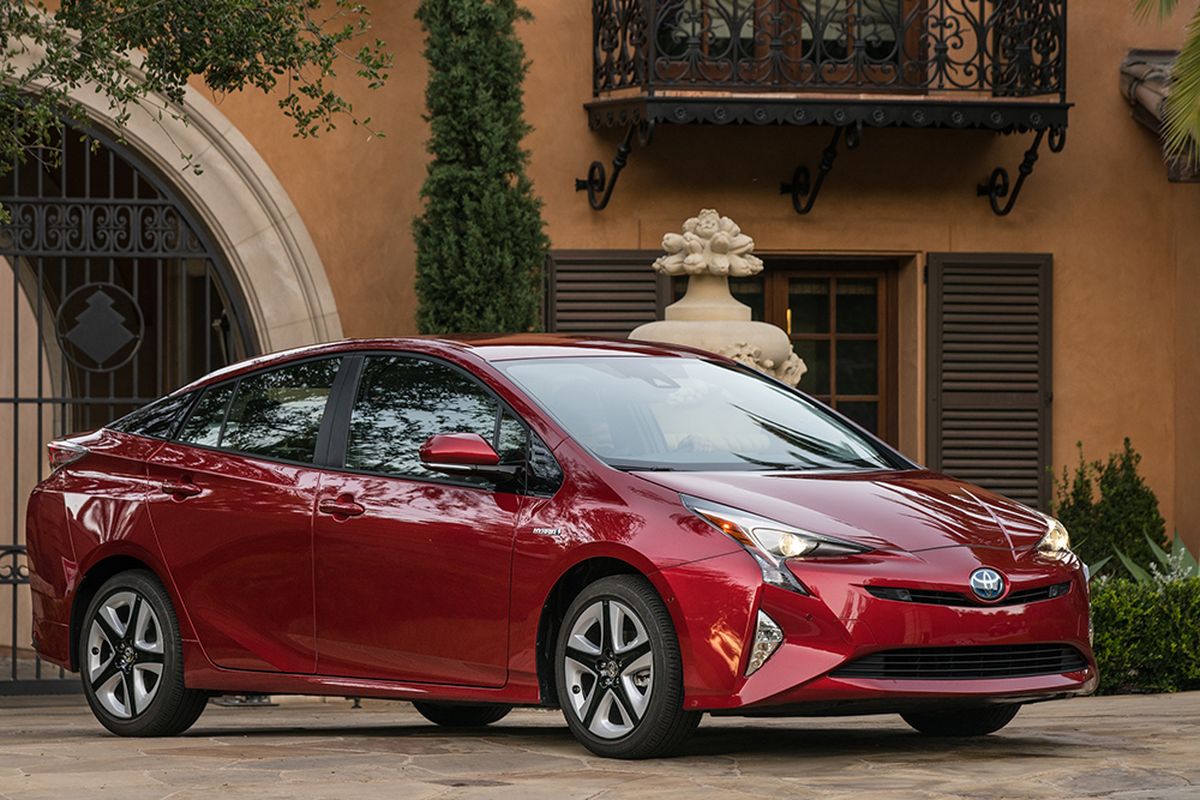Don Adair: New Prius blends efficiency, personality and reliability

The 2016 Toyota Prius is everything Toyota promised it would be.
Already the poster child for fuel efficiency, the fourth-generation Prius ($25,035, including transportation) grows even more efficient. At 52 mpg combined/54 city/50 highway, it’s the most fuel-efficient of all non-plug-in hybrids.
Without really trying, we clocked 50-plus on a windy drive to Portland.
There’s more to the new Prius than fuel efficiency, of course; it’s a better car in every respect. Planted on a new lightweight and high-strength platform, it grows longer, lower and wider. Passenger and cargo space grow. A new, fully independent suspension improves ride and handling and newly available safety and driver-assist technologies .
Prius is also evolving a lively personality. Outside, new metal-bending techniques produce a dramatic angles, creases and curves. Inside, assorted digital displays, a layered dash and body-colored trim coalesce into a techie ambience that’s casual yet tony.
To improve handling and boost headroom, the seating positions (along with the gas engine and electric motors) move lower in the chassis. Regulation-size adults now ride comfortably in the rear seats, on body-friendly contoured cushions.
Toyota’s Synergy Drive hybrid system continues its evolution, with components that are smaller, lighter and better integrated. The system combines the output of a 1.8-liter 4-cylinder gasoline engine and two electric motor/generators to produce 178 horsepower, which is routed to the front wheels via a continuously variable transmission.
In all but the base trim, a lithium-ion hybrid battery replaces last year’s nickel-metal hydride unit.
At highway speeds, the lightweight (3,000-pound) hybrid hunkers down to feel solid and well planted; not even the blustery Gorge winds ruffled its composure. The electric steering system is nicely weighted, though feel remains vague and non-communicative. The new trailing-arm rear suspension is tuned to cut road shock.
Prius’s low (0.24) coefficient of drag contributes to fuel efficiency and to a quieter cabin. Other noise-killing measures include a urethane-based headliner, thicker under-carpet floor mats and laminated windshield glass.
There’s more tech here than at the Apple store. To maximize efficiency, the automatic climate-control system directs airflow only to spots where occupants are seated. A wireless charging system fuels Qi-compatible devices. And Prius is one of the first Toyotas available with the company’s new Safety Sense (TSS) suite, which includes pre-collision braking, with pedestrian detection; lane-departure warning, with steering assist, radar-based intelligent cruise control and automatic high-beam headlights.
Every Prius is equipped with the Entune Multimedia Bundle, which includes a 6.1 in. touch-screen, AM/FM/CD player, six speakers, auxiliary audio jack, USB 2.0 port with iPod connectivity and Siri Eyes Free, advanced voice recognition, hands-free phone capability, phone book access and Bluetooth music streaming.
When operating at low speeds on battery power alone, the Prius emits a low tone that alerts pedestrians and cyclists to its presence.
Based on Consumer Reports’ reliability ratings, Forbes magazine includes Prius on its list of cars likely to still be running at 250,000 miles. With longterm ownership costs factored in, the Prius story grows even more compelling.
Contact Don at don@dadair.com, or visit www.dadair.com.
2016 Toyota Prius Three
Vehicle base price: $24,200
Trim level base price: $26,250
As tested: $30,117
Options included moonroof; color head-up display; pre-collision system, with pedestrian-detection; lane-departure warning, with steering assist; intelligent cruise control; automatic high beams; special color; paint-protection film; all-weather floor mats; cargo tray; rear bumper appliqué.
EPA ratings: 52 combined/54 city/50 highway
Regular unleaded fuel specified
